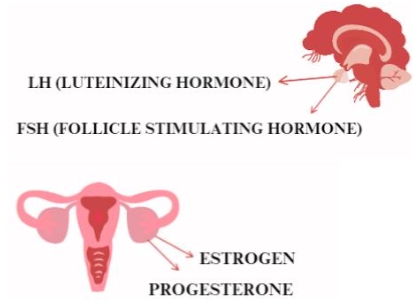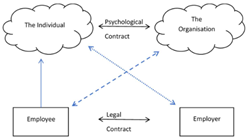Background of anxiety and existential angst: A review of literature
Abstract
Globally, anxiety disorders affect 40 million adults each year and are among the most common mental afflictions in the world. The literature indicates that fear and anxiety are pathologically related. Anxiety and existential angst are also closely related and share many of the same symptoms. This mini-review paper investigates the similarities between fear, anxiety, and existential angst to better conceptualize the internal and emotional difficulties faced by people suffering from anxiety disorders. It also explores the background research into anxiety and existential angst in an attempt to help more people overcome symptoms of anxiety by focusing on the internal locus of control and a Heideggerian philosophical theory on existential challenges. To date, research on internal locus of control and existential angst has inspired many to overcome the fear of mortality and unleash their potential in life to overcome life challenges. This paper provides additional evidence for how these tools may help people cope effectively with anxiety and existential angst.
References
[1]Anxiety & Depression Association of America. What is anxiety? Available online: https://whatisanxiety.adaa.org/?gclid=EAIaIQobChMIh6_U7pfI_gIVVi-tBh3sgQriEAAYAiAAEgKhjPD_BwE (accessed on 15 December 2022).
[2]American Psychiatric Association. Diagnostic and Statistical Manual of Mental Disorders: DSM—5, 5th ed. American Psychiatric Publishing; 2013. 1000p. doi: 10.1176/appi.books.9780890425596
[3]Chorpita BF, Barlow DH. The development of anxiety: The role of control in early environment. Psychological Bulletin 1998; 124(1): 3–21. doi: 10.1037/0033-2909.124.1.3
[4]Fanselow MS, Pennington ZT. A return to the psychiatric dark ages with a two-system framework for fear. Behaviour Research and Therapy 2018; 100: 24–29. doi: 10.1016/j.brat.2017.10.012
[5]Papez JW. A proposed mechanism of emotion. Archives of Neurology & Psychiatry 1937; 38(4): 725–743. doi: 10.1001/archneurpsyc.1937.02260220069003
[6]Steimer T. The biology of fear-and anxiety-related behaviors. Dialogues in Clinical Neuroscience 2002; 4(3): 231–249. doi: 10.31887/DCNS.2002.4.3/tsteimer
[7]Letourneau C. The Physiology of Passions (French). C. Reinwald et Ce; 1878. 382p.
[8]Watson JB. Behaviorism. Routledge; 2017. 251p.
[9]Barlow DH. Unraveling the mysteries of anxiety and its disorders from the perspective of emotion theory. American Psychologist 2000; 55(11): 1247–1263. doi: 10.1037/0003-066X.55.11.1247
[10]Ledoux JE, Pine DS. Using neuroscience to help understand fear and anxiety: A two-system framework. The American Journal of Psychiatry 2016; 173(11): 1083–1093. doi: 10.1176/appi.ajp.2016.16030353
[11]Cannon WB. Bodily Changes in Pain, Hunger, Fear, and Rage, 2nd ed. CH Branford; 1953. pp. 20–36.
[12]Panksepp J. The psychoneurology of fear: Evolutionary perspectives and the role of animal models in understanding human anxiety. Handbook of Anxiety 1990; 3: 3–58.
[13]Engel GL, Schmale AH. Conservation-withdrawal: A primary regulatory process for organismic homeostasis. In: Ciba Foundation Symposium 8—Physiology, Emotion and Psychosomatic Illness. John Wiley & Sons Ltd; 1972. pp. 57–75. doi: 10.1002/9780470719916.ch5
[14]Craig KJ, Brown KJ, Baum A. Environmental factors in the etiology of anxiety. In: Bloom FE, Kupfer DJ (editors). Psychopharmacology: The Fourth Generation of Progress. Raven Press; 1995. pp. 1325–1339.
[15]Adwas AA, Jbireal JM, Azab AE. Anxiety: Insights into signs, symptoms, etiology, pathophysiology, and treatment. East African Scholars Journal of Medical Sciences 2019; 2(10): 580–591.
[16]Crocq MA. A history of anxiety: From Hippocrates to DSM. Dialogues in Clinical Neuroscience 2015; 17(3): 319–325. doi: 10.31887/DCNS.2015.17.3/macrocq
[17]Crocq MA. The history of generalized anxiety disorder as a diagnostic category. Dialogues in Clinical Neuroscience 2022; 19(2): 107–116. doi: 10.31887/DCNS.2017.19.2/macrocq
[18]Craske MG, Rauch SL, Ursano R, et al. What is an anxiety disorder? Focus 2011; 9(3): 369–388. doi: 10.1176/foc.9.3.foc369
[19]Zoellner LA, Pruitt LD, Farach FJ, Jun JJ. Understanding heterogeneity in PTSD: Fear, dysphoria, and distress. Depression and Anxiety 2014; 31(2): 97–106. doi: 10.1002/da.22133
[20]LeDoux J. Emotional networks and motor control: A fearful view. Progress in Brain Research 1996; 107: 437–446. doi: 10.1016/S0079-6123(08)61880-4
[21]Barlow DH. Anxiety and Its Disorders: The Nature and Treatment of Anxiety and Panic, 2nd ed. Guilford Press; 2002. 704p.
[22]Panksepp J. The psychoneurology of fear: Evolutionary perspectives and the role of animal models in understanding human anxiety. Handbook of Anxiety 1990; 3: 3–58.
[23]Shukla P, Rishi P. Health locus of control, psychosocial/spiritual well-being and death anxiety among advanced-stage cancer patients. Psychological Studies 2018; 63: 200–207.
[24]Carrim N, Basson J, Coetzee M. The relationship between job satisfaction and locus of control in a South African call center environment. South African Journal of Labour Relations 2006; 30(2): 66–81.
[25]Lang PJ. Fear reduction and fear behavior: Problems in treating a construct. In: Shlien JM (editor). Research in Psychotherapy. American Psychological Association; 1968. pp. 90–102.
[26]Kierkegaard S. The Concept of Anxiety: A Simple Psychologically Oriented Deliberation in View of the Dogmatic Problem of Hereditary Sin. Liveright Publishing Corporation; 2014. 256p.
[27]Weems CF, Costa NM, Dehon C, Berman SL. Paul Tillich’s theory of existential anxiety: A preliminary conceptual and empirical examination. Anxiety, Stress & Coping 2004; 17(4): 383–399. doi: 10.1080/10615800412331318616
[28]Wierzbicka A. Angst. Culture & Psychology 1998; 4(2): 161–188. doi: 10.1177/1354067X9800400202
[29]Sapir E. Selected Writings of Edward Sapir in Language, Culture, and Personality. University of California Press; 2021. 642p.
[30]Pellens H, Dezutter J, Luyten P, Vanhooren S. To be scared or scared to be: Existential anxiety as a mediator between meaning experience and depression. Journal of Humanistic Psychology 2022. doi: 10.1177/00221678221140617
[31]Costin V, Vignoles VL. What do people find most meaningful? How representations of the self and the world provide meaning in life. Journal of Personality 2021; 90(4): 541–558. doi: 10.1111/jopy.12682
[32]Kim J, Holte P, Martela F, et al. Experiential appreciation as a pathway to meaning in life. Nature Human Behaviour 2022; 6(5): 677–690. doi: 10.1038/s41562-021-01283-6
[33]Bugental JF. Humanistic psychology: A new breakthrough. American Psychologist 1963; 18(9): 563–567. doi: 10.1037/h0048666
[34]Arredondo AY, Caparrós B. Associations between existential concerns and adverse experiences: A systematic review. The Journal of Humanistic Psychology 2019; 63(5): 682–707. doi: 10.1177/0022167819846284
[35]Fuchs T. The life-world of persons with mood disorders. In: Stanghellini G, Broome M, Raballo A, et al. (editors). The Oxford Handbook of Phenomenological Psychopathology. Oxford University Press; 2018. pp. 617–633. doi: 10.1093/oxfordhb/9780198803157.013.64
[36]Tillich P. Anxiety, religion, and medicine: The minister may be a healer and the psychotherapist a priest but the functions should not be confused. Pastoral Psychology 1952; 3(9): 11–17. doi: 10.1007/BF01769082
[37]Berman SL, Weems CF, Stickle TR. Existential anxiety in adolescents: Prevalence, structure, association with psychological symptoms and identity development. Journal of Youth and Adolescence 2006; 35: 285–292. doi: 10.1007/s10964-006-9032-y
[38]Heidegger M. Being and Time. Harper & Row; 1962. 589p.
[39]Berra L. Existential depression: A nonpathological and philosophical-existential approach. Journal of Humanistic Psychology 2021; 61(5): 757–765. doi: 10.1177/0022167819834747
[40]Schneider KJ. Awakening to an awe-based psychology. The Human Psychologist 2011; 39: 247–252. doi: 10.1080/08873267.2011.592464
[41]Kierkegaard S. The Concept of Dread. Lowrie W (translator). Princeton University Press; 1944.
[42]Sartre JP. Being and Nothingness: An Essay in Phenomenological Ontology. Barnes H (translator). Routledge; 1958.
[43]Van Deurzen E, Arnold-Baker C. Existential Perspectives on Human Issues. Palgrave Macmillan; 2005.
[44]Liddell HS. Emotional Hazards in Animals and Man. Charles C. Thomas; 1956.
[45]Iacovou S. What is the difference between existential anxiety and so-called neurotic anxiety? Existential Analysis: Journal of the Society for Existential Analysis 2011; 22(2): 356–367.
[46]Cowden RG, Fuller DK, Anshel MH. Psychological predictors of mental toughness in elite tennis: An exploratory study in learned resourcefulness and competitive trait anxiety. Perceptual and Motor Skills 2014; 119(3): 661–678. doi: 10.2466130.PMS.119c27z0
[47]Goldstein K. The Organism: A Holistic Approach to Biology. American Book Company; 1939.
[48]Marano HE. Kissing cousins: Anxiety and depression may be two faces of one disorder. Psychology Today 2004; 37(2): 17.
[49]MacQuarie J. Existentialism. Penguin Books; 1972.
[50]Van Deurzen E. Existential Counselling and Psychotherapy in Practice. SAGE; 2002.
[51]Auden WH. The Age of Anxiety. Faber & Faber; 1948.
[52]May R. The Meaning of Anxiety. W. W. Norton & Company; 1977. 425p.
[53]Dunn K, Elsom S, Cross W. Self-efficacy and locus of control affect management of aggression by mental health nurses. Issues in Mental Health Nursing 2007; 28(2): 201–217. doi: 10.1080/01612840601096321
[54]Padmanabhan S. The impact of locus of control on workplace stress and job satisfaction: A pilot study on private-sector employees. Current Research in Behavioral Sciences 2021; 2: 100026. doi: 10.1016/j.crbeha.2021.100026
[55]Withy K. The methodological role of angst in Being and Time. Journal of the British Society for Phenomenology 2012; 43(2): 195–211. doi: 10.1080/00071773.2012.11006767
Copyright (c) 2022 Rong Ma

This work is licensed under a Creative Commons Attribution 4.0 International License.









